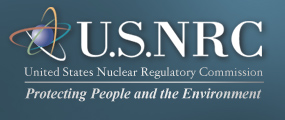Resolution of Generic Safety Issues: Item B-37: Chemical Discharges to Receiving Waters ( NUREG-0933, Main Report with Supplements 1–35 )
DESCRIPTION
In accordance with licensing responsibilities under the National Environmental Policy Act (NEPA), the NRC is responsible for assessing the impact of licensee's discharges into surface waters. The objective of this assessment is to afford a weighing of impacts of the proposed action and a comparison of alternative actions rather than to provide absolute protection to surface waters. In accordance with Section 511 of Federal Water Pollution Control Act (FWPCA), effluent limitations are set by Environment Protection Agency (EPA) and not by NRC under NEPA. However, in accordance with the second Memorandum of Understanding (MOU) between EPA and NRC, the NRC has the lead in the conduct of the environmental impact assessment for nuclear power stations and must assess the limits placed on discharges under the FWPCA. Therefore, the NRC must continue to determine and consider the impact of discharges in its licensing decisions.
The NRC assessment typically considers ambient water quality and addresses the needs of specific identified users of the impacted waterbody. The assessments usually have not resulted in a quantitative determination of impact but have rather involved a subjective determination of acceptability based on a comparison of projected water quality to published criteria for protection of water users. Such criteria are not always formulated to assure the absence of impact and there are substances discharged for which criteria do not exist. Furthermore, the absolute determination of acceptability does not afford a quantitative comparison of alternative actions. This task will provide additional insight into impact of chemical discharges and provide procedures for quantifying the magnitude of any such impacts. This improvement in NRC procedures for impact assessment will provide a clearer division between NRC responsibilities under NEPA and EPA responsibilities under the FWPCA.
There are three specific water quality effects which were questioned. The following specific water quality effects were initially studied:
(1) environmental significance of condenser tube copper in cooling water discharges;
(2) impact of increased total dissolved solids in receiving waters; and
(3) significance of chlorinated organic compounds produced during condenser chlorination.
This item is documented in NUREG-0471, "Generic Task Problem Descriptions (Categories B, C, and D)," U.S. Nuclear Regulatory Commission, June 1978.3
REGULATORY GUIDANCE
- NUREG/CR-0892,469 "Chronic Effects of Chlorination Byproducts on Rainbow Trout, Salmo Gairdneri," U.S. Nuclear Regulatory Commission, November 1980.
- NUREG/CR-0893,470 "Acute Toxicity and Bioaccumulation of Chloroform to Four Species of Freshwater Fish," U.S. Nuclear Regulatory Commission, August 1980.
- NUREG/CR-2823.468"A Review of the Impact of Copper Released into Marine and Estuarine Environments," U.S. NRC, November 1982
DISCUSSION
The Clean Water Act (CWA) establishes the basic structure for regulating discharges of pollutants into the waters of the United States and regulating quality standards for surface waters. The CWA was enacted in 1948 and was called the "Federal Water Pollution Control Act." The Act was significantly reorganized and expanded in 1972. The law became commonly known as the "Clean Water Act".1984
Under the CWA, the EPA has implemented pollution control programs, such as setting wastewater standards for industry. In addition, the EPA set water quality standards for all contaminants into surface waters. Water quality standards vary by state and by site, but most states follow guidelines set forth by the EPA that propose water quality criteria sufficient for aquatic life and human health.
Section 401 of the CWA requires that before Federal agencies issue operating permits that would increase pollutant load to a water body, the applicant must first obtain certification from the applicable state, local, and affected Indian tribes.
The National Pollution Discharge Elimination System (NPDES) program, which controls direct discharges into navigable waters, is promulgated in Section 402 of the CWA. The CWA made it unlawful to discharge any pollutant from a point source into navigable waters, unless a permit was obtained. NPDES permits are issued by the EPA or an authorized state to the discharging facilities. Industrial, municipal, and other facilities must obtain permits if their discharges go directly into surface waters. The permits contain water quality standards specific to the water body to which the facility is discharging and establish pollutant monitoring and reporting requirements.
CONCLUSION
This issue is RESOLVED.
REFERENCES
|


